Echoes of the Past: Keeping Indian Heritage Alive Through Stories for a Sustainable Future
In a time where trends shift by the hour and digital noise fills our days, India’s rich heritage can easily get lost in the background. But within this fast-paced world lies a powerful chance—not to fight the change, but to carry our legacy forward in a way that speaks to people today. When we tell stories, we don’t just look back—we bring history to life, make it part of our present, and ensure it reaches the next generation.
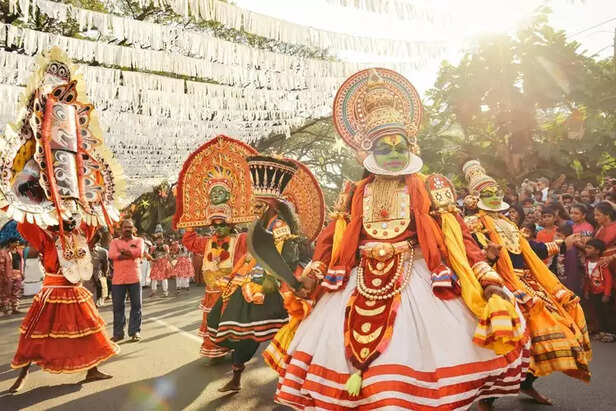
Culture
Sharing our cultural roots through narratives isn’t just about honouring the past; it’s about shaping a future that remembers where it came from.
Heritage Isn’t Just About Monuments – It’s a Way of Thinking
When we hear the word
heritage, most of us picture grand places like the Taj Mahal, Rajasthan’s forts, or the ghats of Varanasi. But heritage goes far beyond historic buildings. It’s in the folk songs that float through Himachali mountains, in Kerala’s Kathakali performances, in the ancient tribal stories of Nagaland, and in the quiet elegance of Urdu poetry spoken in the streets of Lucknow. It lives in our languages, our food, our traditions, our crafts – and in the shared memories passed down through generations.
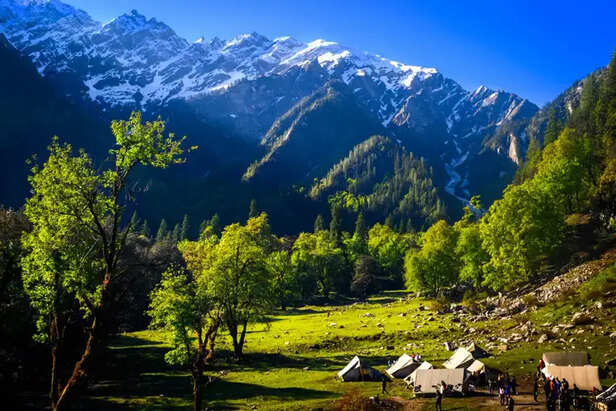
Himalayan Region
But as cities grow and the world becomes more connected, these unique parts of our identity risk fading away. Many young people today aren’t exposed to the culture and stories of their roots – and that leaves a gap, not just culturally but emotionally. This is why it's more important than ever to find fresh ways to keep our heritage alive – ways that make people curious, connected, and proud of where they come from.
Why Stories Matter
Stories shape the way we see the world. A powerful narrative can change minds, inspire movements, and bring people together—even when they come from very different backgrounds. In India, storytelling has always been a quiet superpower—from age-old epics like the Mahabharata to today’s films.
Stories help us connect with the past in a way that facts alone can’t. They add emotion to history and keep it alive. Think about how much more meaningful it would be to learn about India’s freedom struggle through the personal letters of forgotten revolutionaries, rather than just memorising dates. Or imagine learning about the country’s rich biodiversity through tribal tales that see rivers and forests as living, sacred beings.
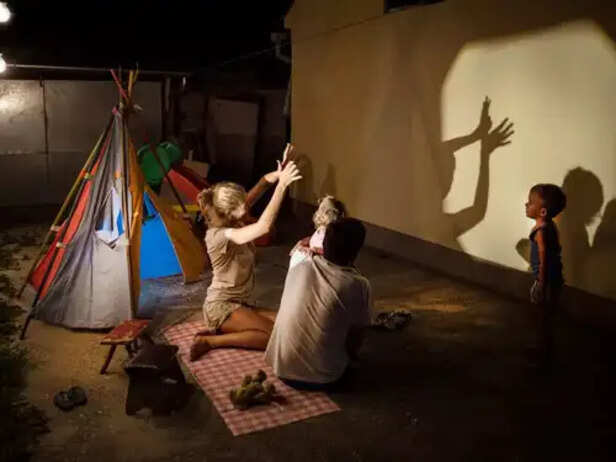
Art of Story telling
Stories build empathy—and empathy is what moves people to act.
Social Media as a Time Machine
Technology often gets blamed for disconnecting us from the past, but it can just as easily help us reconnect with it. Platforms like Instagram, YouTube, and podcasts have become modern stages for storytelling, where culture and history find fresh expression.
Today’s creators are mixing tradition with trend—like dancers who weave Bharatanatyam into reels or vloggers who explore the secrets of ancient temples. Accounts such as
@IndianArtHistory or YouTube channels like
Live History India are making history feel alive again, breaking it down into short, visually engaging pieces.

Social Media
It’s not that Gen Z or millennials aren’t interested in heritage—they just prefer it in formats they already engage with every day.
Why It Matters Politically
Telling stories from our past isn’t just about remembering—it’s also a powerful way to strengthen democracy. When we share heritage through storytelling, it shifts control away from official textbooks and gives space to voices that are often ignored—like those from Dalit communities, indigenous groups, or even LGBTQ+ experiences hidden in old texts. These stories challenge the mainstream version of history and make room for a more inclusive picture.
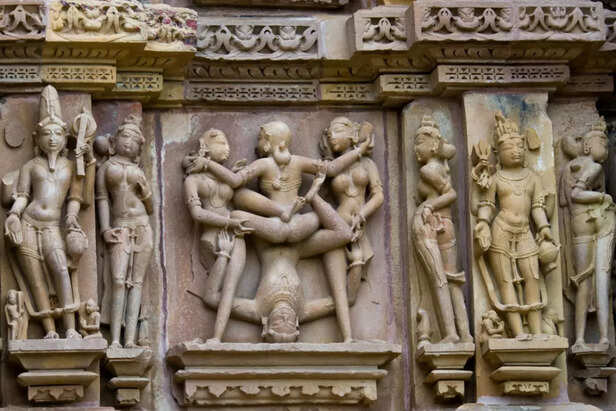
Indian Temple
In a country as diverse as India, sharing these different narratives helps people connect. It shows that unity doesn’t mean we all have to be the same—it means we can come together despite our differences. Especially when politics gets divisive, stories have the unique ability to bring people closer and remind us of what we share.
The Connection Between Economic Growth and Sustainable Development
India’s cultural heritage is more than just history—it’s a living, breathing source of income for millions. Before the pandemic, the Ministry of Tourism noted that heritage tourism made up almost 10% of India’s GDP. Crafts like handlooms, traditional arts, and folk music not only reflect our identity but also support countless livelihoods. Sadly, many of these traditions are fading because their stories aren’t reaching people anymore.
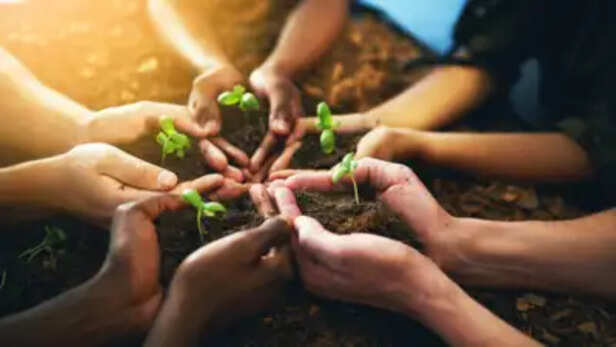
Sustainable Cooperation
Sustainability isn’t a new concept for us. It’s always been a part of our way of life. Take the Bishnoi community in Rajasthan—they’ve been protecting wildlife and trees for generations, inspired by age-old beliefs. In the Northeast, farmers still use traditional techniques passed down through stories, which are far more eco-friendly than many modern methods.
Bringing these stories back isn’t just about honoring the past. It’s about using the wisdom of our ancestors to deal with today’s problems—whether that’s protecting nature, farming in harmony with the environment, or adapting to climate change.
Education: More Than Just History Class
Education should be more than a series of isolated subjects; it has the potential to be a rich, interconnected experience. Imagine teaching not just through textbooks, but through stories that weave together multiple disciplines. Instead of separating history, science, civics, and culture, what if we told compelling narratives that link them together?
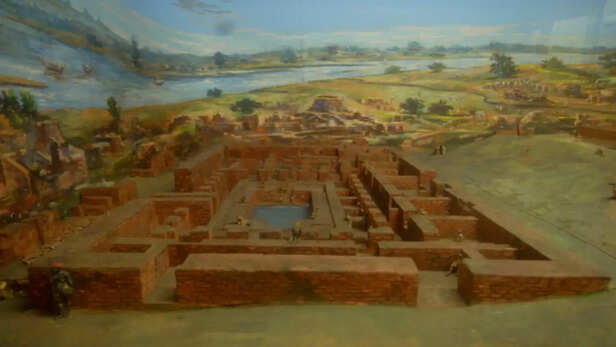
Indus Valley civilisation
Take, for instance, the Indus Valley civilisation—not just a chapter in history, but a case study in geography and sustainable urban planning. Students could learn how ancient societies used river systems intelligently, blending environmental science with historical insight. Or consider Ayurveda. Rather than viewing it as only an ancient practice, it can be introduced as a fusion of scientific exploration and cultural heritage, showing its continued relevance in today’s healthcare landscape. Even civics lessons could be brought to life using the Panchatantra, teaching ethics and governance through timeless fables that resonate with young minds.
This kind of interdisciplinary approach doesn’t just make learning more engaging—it nurtures the skills that matter most in today’s world: critical thinking, creativity, and a deeper appreciation of cultural roots. In an era that demands adaptability and global awareness, storytelling can turn education into something truly transformative.
The Role of Communities
Many traditional preservation efforts fall short because they take a top-down approach, ignoring the unique insights and experiences of the people who actually live within and shape those cultures. Real heritage conservation needs to start with the communities themselves. After all, it's the local people who carry the knowledge of their customs, languages, and traditions. When they’re given the tools and platforms to share their own stories—whether that’s through local museums, cultural festivals, or even digital archives—the results are far more genuine and lasting.

community
In recent years, community-driven platforms have started to gain traction. These allow individuals to contribute their own folklore, recipes, or family histories. Far from being static collections, these spaces function more like living museums—places where culture continues to grow, evolve, and stay connected to the people who created it.
What Can You Do?
A great place to begin is right at home. Take time to talk to your grandparents or elders in the family. Ask them about the songs they grew up with, the games they played as children, or how they celebrated festivals. These conversations not only bring you closer to your roots but also help preserve stories that might otherwise fade away.

grandparents
Another meaningful step is to support creators and platforms that are shining a light on India's cultural heritage. Whether it's by following, liking, or sharing their content, your engagement helps amplify their efforts and keep traditional knowledge alive.
You can also consider volunteering with or donating to organizations that work to preserve regional art forms and oral traditions. Many grassroots NGOs are doing incredible work, and even a small contribution—whether your time or resources—can make a big difference.
If you're feeling inspired, why not create something yourself? Launch a blog, podcast, or Instagram page focused on a particular tradition, language, or cultural practice you’re passionate about. Your unique perspective can help connect others with India’s rich and diverse heritage.
Lastly, don’t be afraid to ask tough questions—especially in schools. Advocate for more inclusive and diverse histories in textbooks and curricula. A fuller, more accurate picture of India’s past helps future generations appreciate and respect the country’s cultural depth.
A New Kind of Patriotism
In today’s world, where countries race to climb the ladder of GDP and global rankings, maybe it’s time we paused to ask—what does real progress look like? Perhaps it's not just about numbers and development graphs, but also about holding on to who we are. Preserving our cultural roots doesn’t mean resisting change—it’s a bold act of embracing our identity. It’s about recognizing that our heritage isn’t just relics of the past, but a foundation for the future. It’s a way of saying that our stories, our traditions, and our people matter.
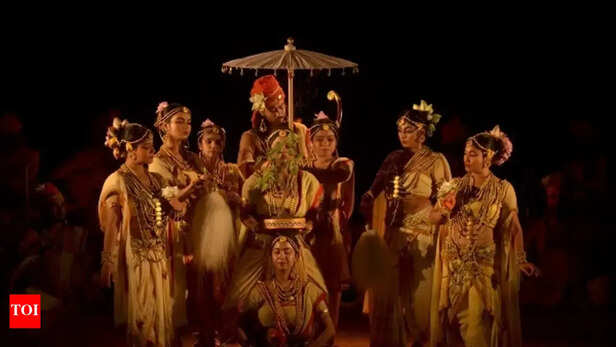
theater art
Think about the quiet magic that happens when a child in Delhi hears a folk tale from Assam, or when a Tamil podcast takes a moment to celebrate the intricate beauty of Gond art. In those moments, something much deeper than entertainment is taking place. We begin to mend the gaps in our shared identity, reconnecting the threads of a culture too rich and diverse to be forgotten.
In the end, heritage isn’t about clinging to the past, but about keeping its essence alive and relevant. Our stories, like embers, have the potential to light the way forward. By nurturing them, we can gain a deeper understanding of who we are, where we’ve come from, and the paths we can take in the future. This isn’t about rejecting modernity; rather, it’s about creating a meaningful dialogue between the past and present.
Preserving India’s heritage through storytelling is more than just remembering history. It’s a call for social change, ecological awareness, and the renewal of our nation’s spirit.
So let’s not just scroll past these stories. Let’s take the time to listen, share, and ensure they continue to thrive—for ourselves and for future generations.
Unlock insightful tips and inspiration on personal growth, productivity, and well-being. Stay motivated and updated with the latest at
My Life XP.





















